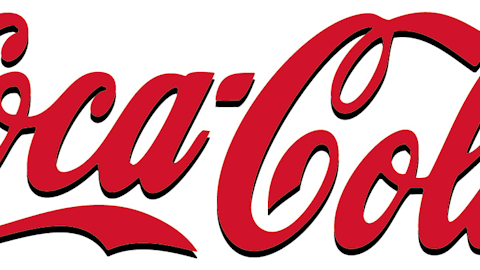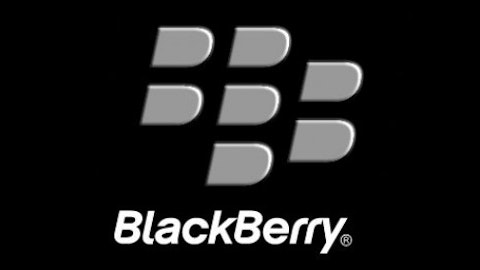At the end of the day, investing is about maximizing returns, although there are multiple components to this. Things like managing risk, identifying opportunities, and knowing when to cut your losses are all important, but another factor comes into play after you realize a return. And that’s taxes.
A present situation
Investors should be familiar with the concept of capital gains and capital losses and that losses can be deducted against gains in most situations. Looking at shares of Research In Motion Ltd (NASDAQ:BBRY) over the past few months, many investors have bought their shares above the $14.44 share price as of the close on Jun. 14. First of all, the losses on these shares are unrealized (assuming they are still being held), meaning they will not be used to reduce your tax burden by lowering your realized capital gains.
Now someone probably just thought something like: “I’ll sell my shares, realize the loss, and rebuy the shares the same day.” Not so fast. The IRS has already created a rule to manage this practice. The wash sale rule disallows the loss if “substantially identical securities” are bought within thirty days and the same stock would fall under this category.
But if you are a Research In Motion Ltd (NASDAQ:BBRY) investor who owns shares above the current market value, there is a way to both hold your shares through the Q1 earnings release on June 28 and realize your tax loss if earnings meet or miss expectations. SmartMoney refers to it as a “doubling up” strategy whereby you double your holding of the stock (in this case BlackBerry) and then sell half of your shares more than thirty days after your “doubling up” purchase. Due to the “first in, first out” tax planning common among investors, the loss will not be disallowed under the wash sale rule.
Doubling your risk
Of course by owning twice as many shares on June 28, you are doubling your risk for loss as well as for gain. Investors who cannot afford a loss of this amount should avoid this strategy. But for investors who can tolerate this risk, let’s look at the three main potential scenarios from June 28:
1. Sales of BlackBerry 10 devices fail to live up to expectations or device sales meet expectations but subscriber numbers collapse. A wave of selling begins with a possible bear raid. Shares drop into at least the $12 range where there has been significant support.
2. Sales of BlackBerry 10 devices and subscriber numbers are largely in line with expectations. Analysts begin to speculate on Q2 results and stock stock gives a “meh” reaction similar to the Q4 earnings release.
3. Sales of BlackBerry 10 devices blow away expectations and subscriber numbers are not enough to hold back a buying wave. The massive short interest in Research In Motion Ltd (NASDAQ:BBRY) drives shares into the upper teens range and possibly higher.
Other squeezes
At this point, analysts cannot agree on any of these scenarios but, due to this disagreement, assigning random chance to each gives each a 1 in 3 possibility of happening. There may be a little more weighting toward the bull side due to positive notes by Societe Generale and Wells Fargo last week, but if anything that would strengthen the cause to play a “double up” on Research In Motion Ltd (NASDAQ:BBRY) shares.
Those playing a “double up” would see success in two of the listed three scenarios. A “meh” reaction would allow them to realize their capital losses and a short squeeze would outweigh any tax benefits to realizing the losses by providing large gains in the share price.
A similar strategy could have been used for Netflix, Inc. (NASDAQ:NFLX) since many shareholders probably owned shares at levels above the pre-squeeze share price. A proper execution of a “double up” would have allowed shareholders to benefit twice as much from the resulting short squeeze knowing that if Netflix, Inc. (NASDAQ:NFLX)’s results only met expectations they could claim their capital loss in thirty days.
But this strategy is not useful for all stocks with a possible short squeeze ahead. When Tesla Motors Inc (NASDAQ:TSLA) went on its short squeeze run, hardly any of the pre-squeeze shareholders had an unrealized capital loss that could be claimed. “Doubling up” on Tesla would only have increased their risk beyond the level they originally planned.
Catalysts
Research In Motion Ltd (NASDAQ:BBRY), Netflix, Inc. (NASDAQ:NFLX), and Tesla all have one or more products that are critical to future success in the eyes of investors. The BB10 phones are what BlackBerry investors will be watching on June 28 to see sales rates and acceptance levels. Like Research In Motion Ltd (NASDAQ:BBRY) investors watching phone sales, Netflix, Inc. (NASDAQ:NFLX)investors are watching the popularity of the company’s Internet TV service. After a price change debacle, Netflix is regaining interest among investors, and on two separate occasions these bullish investors benefited from short squeezes on the stock, causing it to rise from the double digit range to above $200 a share today.
When investors think of a company with a lot riding on a single product, Tesla Motors Inc (NASDAQ:TSLA) has to be near the top of the list. Investors were looking for both an increase in production numbers and a reduction in production costs. The reduction in production costs was largely expected, but when the automaker beat on earnings and revenue, shorts were squeezed moving the stock from the $50 range all the way to a high of nearly $115 before settling back at around $100.
In both the Netflix, Inc. (NASDAQ:NFLX) and Tesla situations, investors “doubling up” would have won (although, as previously discussed, not many Tesla investors were in the red at the time) as the short squeeze scenario played out. But results could easily have gone the other way, leaving “doubling up” investors holding the bag. And that is an important consideration. “Doubling up” is another way to double both risk and reward. Investors should not “double up” when they cannot handle the downside risk because the results of both Tesla and Netflix, Inc. (NASDAQ:NFLX) could just as easily have turned those “double ups” into double losses.
Using “double up”
“Doubling up” allows investors to realize capital losses that would otherwise be treated as wash sales for tax purposes. In a wash sale, the loss is still out there to be claimed but is not part of realized gains/losses and only adds to the basis of the repurchase. If investors are considering using a “double up” on a stock such as Research In Motion Ltd (NASDAQ:BBRY) they need to be sure they meet the ideal criteria: They a) can handle the added risk of owning twice the number of shares, b) they have an unrealized capital loss on the stock, and c) they are neutral to positive on shares in the near-term. Investors meeting all three of these criteria may want to consider this strategy considering both the risks and rewards.
Alexander MacLennan owns shares of Research In Motion Ltd (NASDAQ:BBRY) and Tesla Motors Inc (NASDAQ:TSLA). He is not a tax professional and the following information has been gathered from various third party sources for the purpose of this trading opportunity. While the information presented in this article is correct to the best of his knowledge, investors are advised to consult a reputable tax professional before making investment decisions. This article is not an endorsement to buy or sell any security and does not constitute professional investment advice. Always do your own due diligence before buying or selling any security. The Motley Fool recommends Netflix and Tesla Motors . The Motley Fool owns shares of Netflix, Inc. (NASDAQ:NFLX) and Tesla Motors Inc (NASDAQ:TSLA).
The article An Interesting Trade Ahead of June 28 originally appeared on Fool.com.
Alexander is a member of The Motley Fool Blog Network — entries represent the personal opinion of the blogger and are not formally edited.
Copyright © 1995 – 2013 The Motley Fool, LLC. All rights reserved. The Motley Fool has a disclosure policy.





